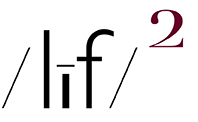(embiggenable)
(embiggenable)
(embiggenable)
CAVEAT: IN THIS ENTRY, NAMES HAVE BEEN CHANGED-or omitted-to protect the guilty..err…ah, I mean the “innocent”.
This entry is a followup to my last 2 entries wherein I mentioned: a. prints-”the very thing one sees on the wall of a gallery or in a photographer’s monograph”-and, b. “the ease of making “good” pictures-i.e. sharp, correctly exposed with decent color balance, referent in focus and the like”.
Re: a. the print: on a recent entry on TOP, The Printing Challenge, wherein Michael Johnston wrote about “the treacherous waters of home printing”, incited 2 diametrically opposed responses….
“'…it's not a photograph until you can hold it in your hand.' I completely fail to understand folks who spend a fortune on cameras and lenses and the show their images only on a screen.”
….and this are-you-kidding-me pile of steaming xxx xxxx…
“We're not in the 1980s anymore. The print is no longer the ‘gold standard’.”
The later comment was put forth by a picture maker whom the former comment poster would “completely fail to understand”. That written, I have a pretty good inclination as to the source of the picture maker’s no-longer-the-gold-standard comment. Having viewed, over the years, a variety of pictures posted by said picture maker-who only shows pictures on a screen-I can write with complete assurance that that picture maker makes very few, if any, print-worthy pictures. Therefore, following the logic, there is no reason for that picture makers to make prints.
Re: the ease of making “good” pictures: due to the fact that only 7% of pictures currently being made are made with a real camera, I can picture, on the hi-def screen in my head, the beads of sweat cascading down the forehead of those “serious” real-camera picture makers as they hear the disturbing pitter-patter of the feet of the smartphone-wielding crowd who are breathing down their necks, good picture making wise.
To wit, so many of the “serious” real-camera picture makers-the aforementioned picture maker included, maybe even head of the class-pin all of their picture making hopes and dreams on the fact that they spend a fortune on expensive cameras, lenses, and related gear in the pursuit of making really good pictures with the belief, aka: delusion, that the resulting pictures will separate their work from that of the maddeningly annoying, camera phone picture making crowd.
iMo, their work is in fact separated from the maddening crowd, but not as a result of the gear with which they make their pictures. No. The most distinguishing characteristic that separates their pictures from those made by maddening crowd-using camera phones or even real cameras-is the fact that most pictures-to be certain, most, but not all pictures-made by the average gear-obsessed picture maker is sorely lacking in unique personal vision. A condition which is not aided, but rather, retarded by the fact that most of the gearheads make their pictures by-the-numbers, aka: the “rules” of so-called “good” photography, aka #2: what they have been told is a good photograph.
So there you have it. Another bit o’ words that will, in one form or another, be part of my modern pictures philosophy.
